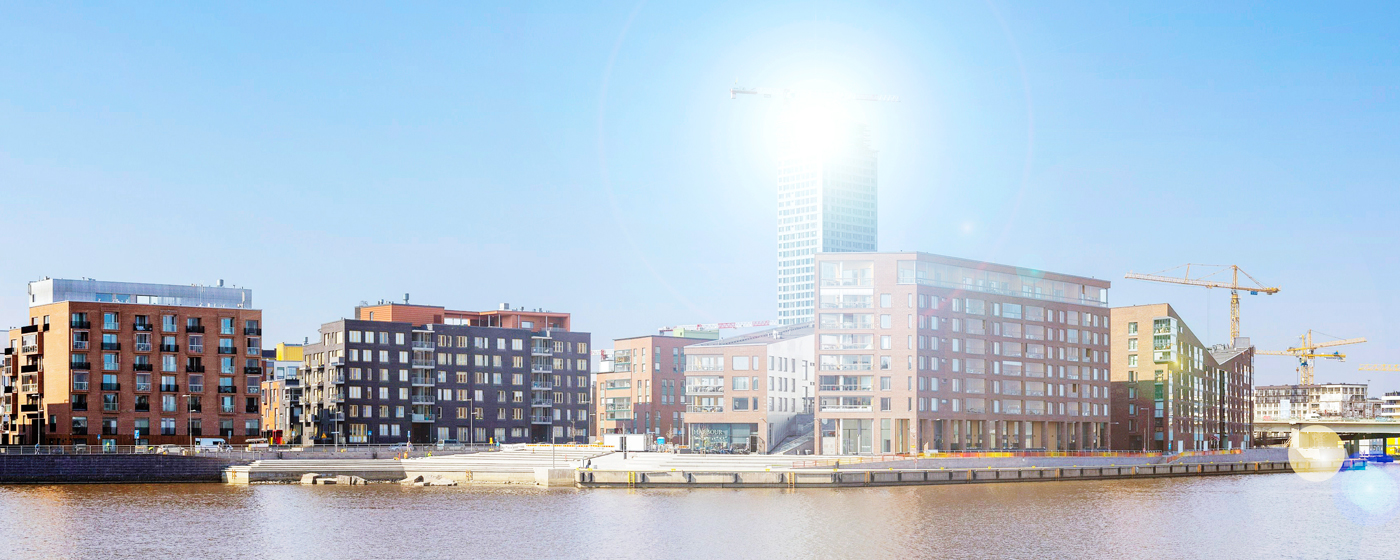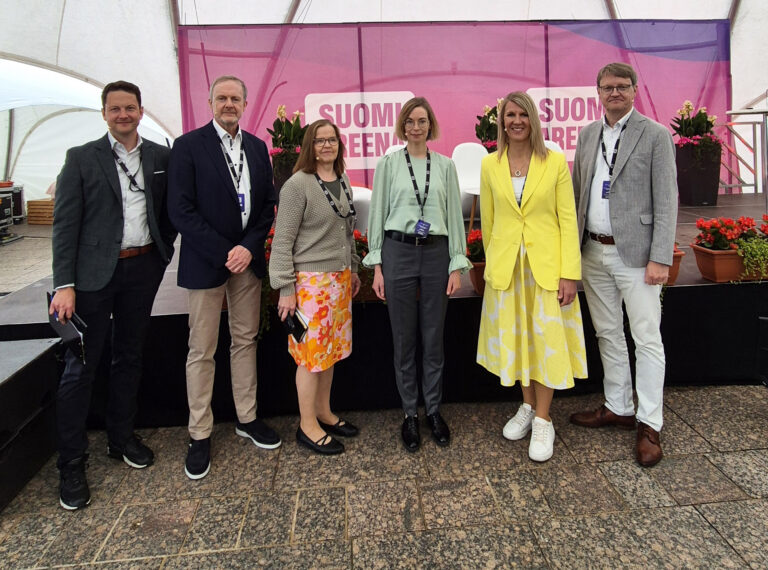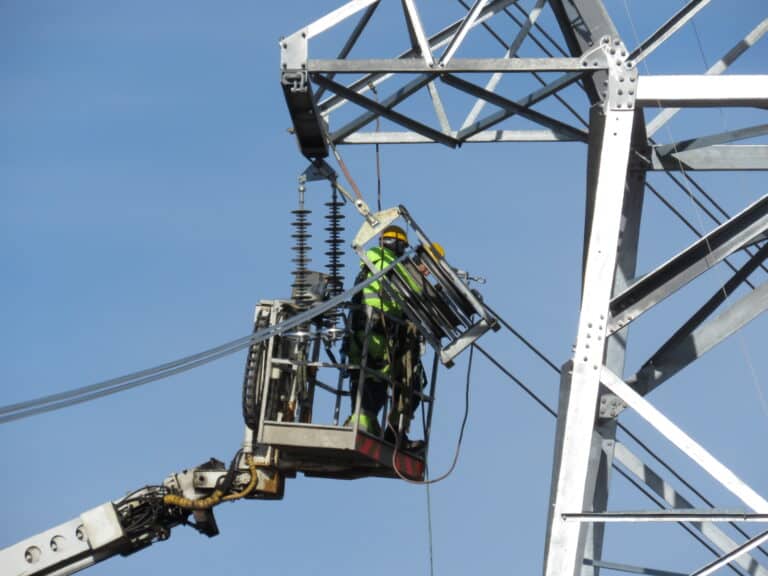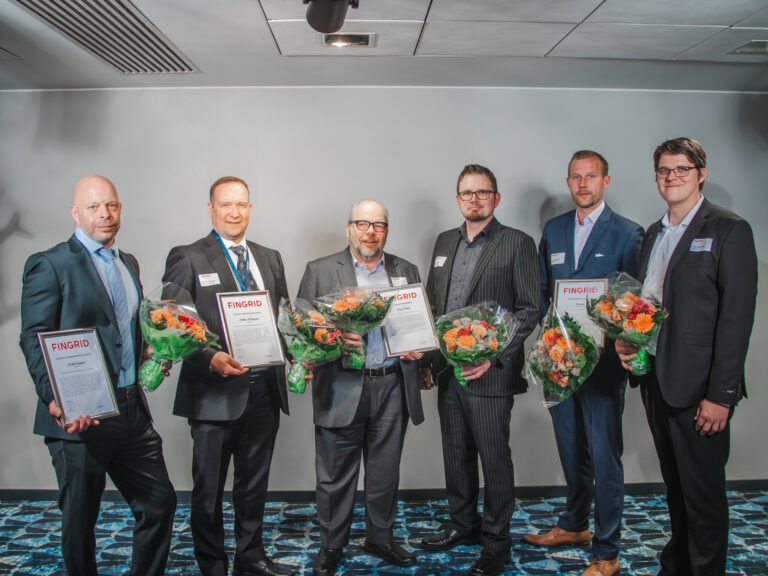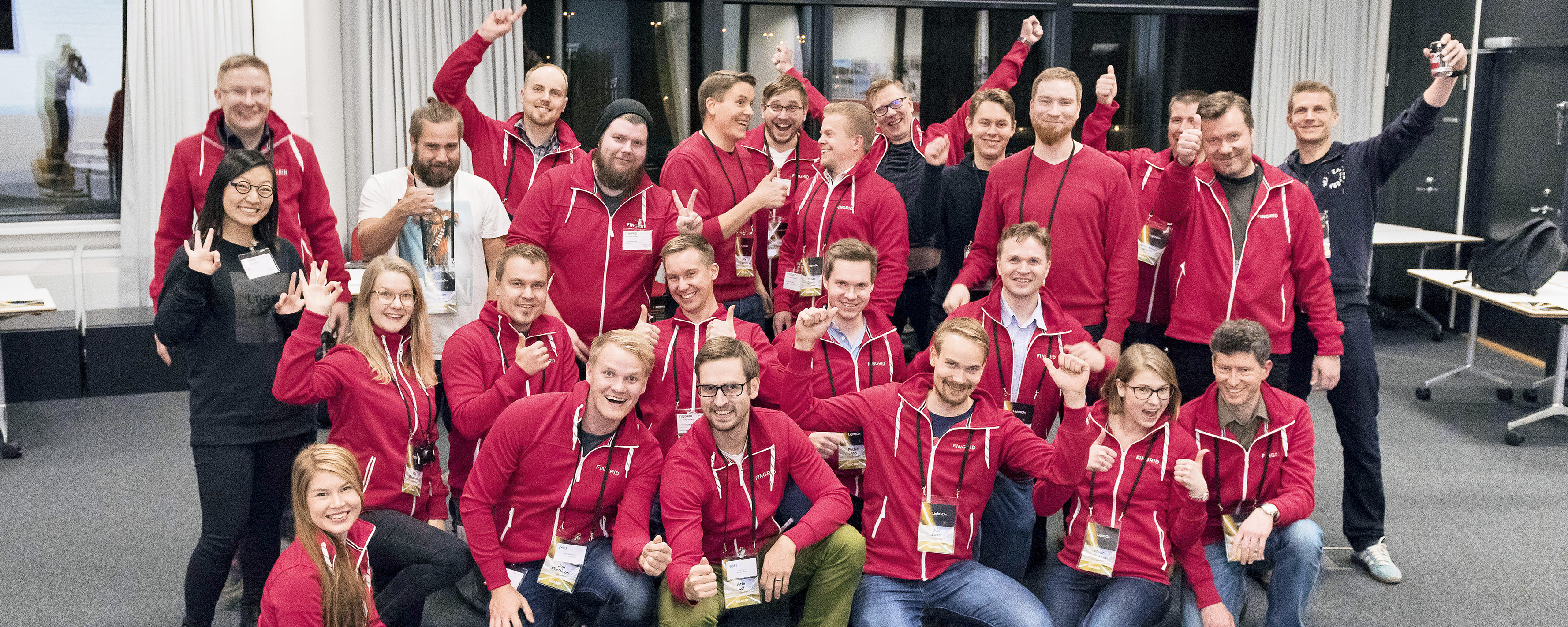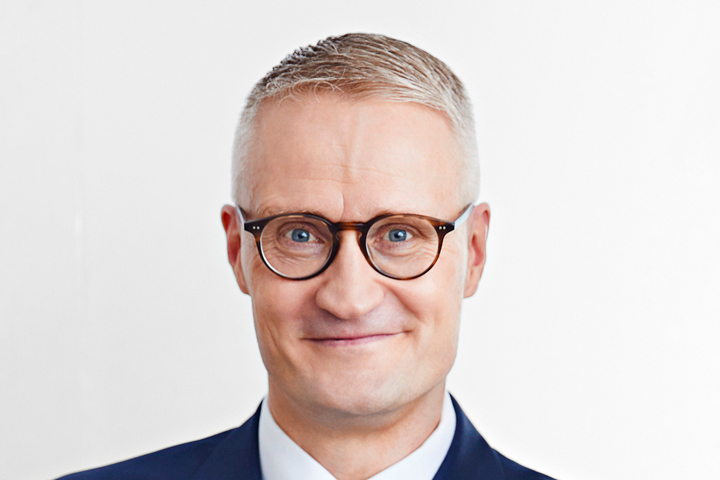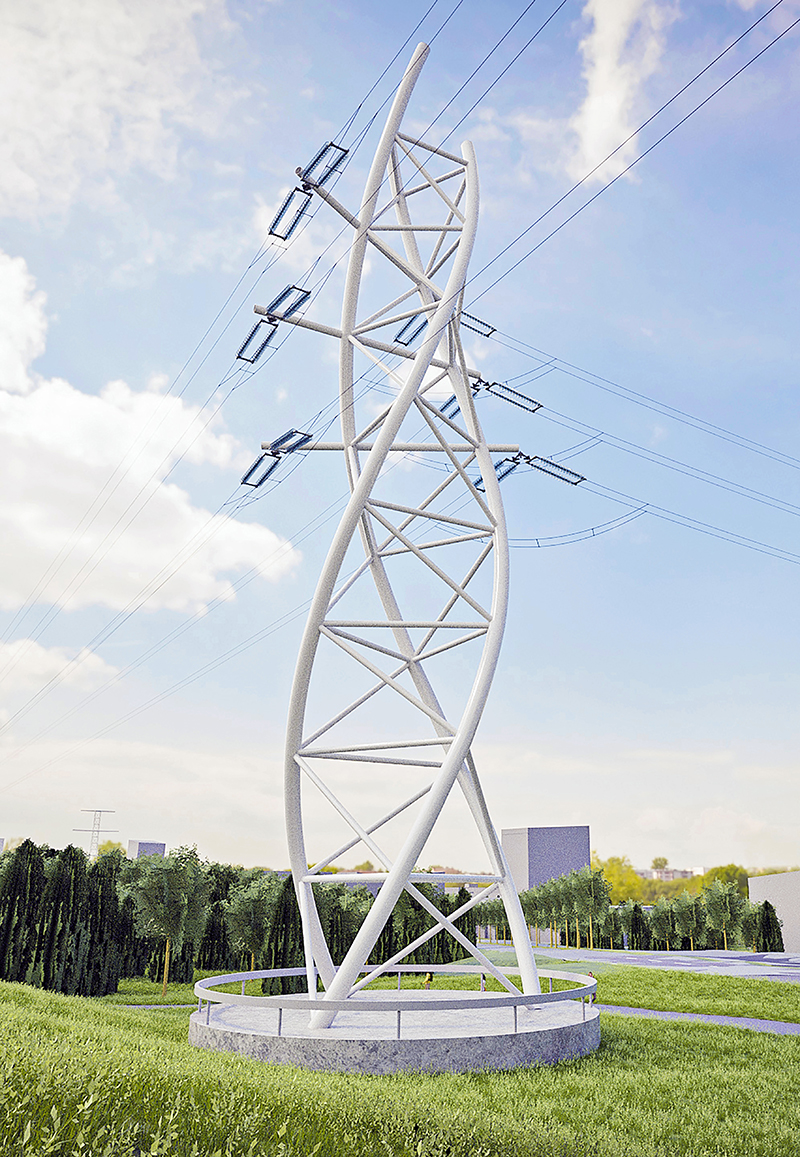Millainen on 2030-luvun Suomi? Digitalisoituneessa liikenneverkossa hyrräävät autonomiset ajoneuvot kuljettavat lähitöihin kiirehtiviä työntekijöitä työpaikoilleen, etätyöläiset virtuaalipalaveeraavat kotitoimistoissaan, minkä mahdollistavat useat datakeskukset ympäri Suomea. Akkutehdaskeskittymät käyvät päästöttömällä energialla. Kivihiiltä ja turvetta löytyy säilöttynä enää vain Huoltovarmuuskeskuksen varmuusvarastoista.
Sähköntuotanto ja sähkön kuluttaminen kasvaa ja monipuolistuu.
”Työn digitalisoituminen, pilvipalvelut ja Suomen hiiilineutraaliustavoite vaativat lisää sähköä, minkä tuottamiseen meillä Suomessa on hyvät edellytykset. Fingridin ylläpitämä kantaverkko on hyvässä kunnossa, sähköverkot kehittyneet ja halpaa sähköä on hyvin saatavilla”, Senior Advisor Alpo Akujärvi Business Finlandista sanoo.
Monipuolistuva energiatuotanto, varma sähkönsaanti ja turvallinen toimintaympäristö lisäävät Suomen vetovoimaa kansainvälisessä kilpailussa uusista yrityshankkeista. Akujärven mukaan esimerkiksi kansainvälisiä datakeskuksia sijoitellaan nyt Suomen kaltaisille reuna-alueille, kun markkinat muualla Euroopassa ovat saturoitumassa.
Kilpailussa datakeskuksista Suomen vahvuutena on myös valmis kaukolämpöverkko.
”Kilpailussa datakeskuksista Suomen vahvuutena on myös valmis kaukolämpöverkko, joka erottaa meidät muista maista. Fingridin kantaverkko poikkeaa myös kansainvälisesti, sillä siihen on suurten investorien ja sähkönkuluttajien mahdollista liittyä suoraan, mikä tarkoittaa lisää kustannustehokkuutta”, Akujärvi sanoo.
Hänen mukaansa jo vuonna 2025 yritysten it-infrasta on noin 80 prosenttia pilvessä. On myös ennustettu, että jo ensi vuoden loppuun mennessä kaikesta globaalista BKT:sta noin 65 prosenttia tuotetaan joko kokonaan tai osittain digitaalisessa muodossa.
Ennakoivuus ja joustavuus ovat Fingridin vahvuuksia
Sähkönkulutus ja -tuotanto sekä koko energiamurros käy tällä hetkellä kuumilla kierroksilla. Nopea kehitysloikka paineistaa Fingridiä kehittämään verkkoaan ja alustaansa pitkäjänteisesti ja ennakoiden.
”Fingridin vahvuus on sen toiminnan joustavuudessa. Isot teollisuushankkeet ovat usein pitkiä investointeja. Fingrid on osannut ottaa pallosta kiinni ja lähtenyt suunnittelemaan jo varhaisessa vaiheessa potentiaalisten uusien kumppaneiden kanssa energiaratkaisuja ja kantaverkon kehittämistä”, Akujärvi sanoo.
Vastuullisia toimijoita kiinnostaa tulevaisuudessa puhdas energia. Suomen tavoite olla hiilineutraali vuoteen 2035 mennessä kiihdyttää muutosta fossiilisista polttoaineista vähäpäästöisiin ratkaisuihin. Energian tuotantorakenteen muutos on vahva kehitysajuri Fingridin verkon kehittämiselle.
”Haluamme olla puhtaan hiilineutraalin Suomen pohjustaja ja puhtaan sähköjärjestelmän luoja. Haemme ratkaisuja energiamurroksen tuomiin uusiin vaatimuksiin parantamalla jatkuvasti kantaverkkoa sekä visioimalla eri skenaarioin, millaisia vaatimuksia muuttuva tuotantorakenne sekä yhteiskunnan yhä voimakkaampi sähköistyminen tarkoittaa kantaverkon ja koko sähköjärjestelmän kehittämisen kannalta”, sanoo asiantuntija Eveliina Seppälä, joka työskentelee Fingridin strategisen verkkosuunnittelun yksikössä.
Verkkovisio ja kantaverkon kehittämissuunnitelma mahdollistavat
Sääriippuvan tuotannon lisääntyminen, uudet suuret ydinvoimayksiköt, säätökykyisen tuotannon määrän väheneminen, uuden tuotannon maantieteellinen sijoittuminen ja yhteiskunnan sähköistymisnopeus ovat keskeisiä trendejä verkon kehittämisen näkökulmasta.
”Analysoimme energiamurrosta kahdessa aikaikkunassa. Kantaverkon kehittämissuunnitelmassa olemme päivittäneet Fingridin kantaverkon kehitystarpeet ja suunnitelmat seuraavalle vuosikymmenelle asti, kun taas sidosryhmien sparraama verkkovisio tähtää pidemmälle tulevaisuuteen. Sen fokus on vuodessa 2035, jolloin Suomen on tavoitteena olla hiilineutraali”, Seppälä sanoo.
Tulevaisuudessa merkittävimpiä muuttujia ovat teollisuuden, lämmityksen ja liikenteen sähkönkulutus, maa- ja merituulivoiman tuotanto ja sijoittuminen, hajautetun aurinkovoiman määrä, tuotannosta ja kulutuksesta saatava jousto sekä ydinvoimalaitosten tulevaisuus.
Kantaverkon kehittämissuunnitelmassa olemme päivittäneet Fingridin kantaverkon kehitystarpeet ja suunnitelmat seuraavalle vuosikymmenelle asti, kun taas sidosryhmien sparraama verkkovisio tähtää pidemmälle tulevaisuuteen.
Vielä on vaikeaa arvioida, mikä verkkovision skenaarioista tulee toteutumaan, mutta jo nyt on selvää, että mittavat tuulivoimatuotannon hankkeet merkitsevät, että sähkön siirtotarve pohjoisesta Suomesta etelään kasvaa merkittävästi.
Kantaverkon pääsiirtoleikkausten eli Keski-Suomen poikkileikkauksen sekä Kemin-Oulujoen poikkileikkauksen siirtokapasiteetti on moninkertaistettava, jotta Suomi voidaan säilyttää yhtenäisen sähkökaupan tarjousalueena ja mahdollistaa sähkön sama markkinahinta koko maassa.
Kantaverkon näkökulmasta Suomen vuodelle 2035 asetettu hiilineutraaliustavoite voidaan saavuttaa. Tavoitteen mahdollistaminen edellyttää merkittäviä, noin kolmen miljardin euron investointeja seuraavan 15 vuoden aikana.
Fingrid on jo päivittänyt tältä pohjalta kehittämissuunnitelmaansa ja arvioi kantaverkkoon investoitavan seuraavan kymmenen vuoden aikana noin kaksi miljardia euroa. Mikäli Suomeen syntyy merkittävästi uutta sähköintensiivistä teollisuutta tai Suomesta tulee sähkön ja sähköstä tuotettujen polttoaineiden viejä, kantaverkkoinvestointeja tarvitaan todennäköisesti edellä esitettyä enemmän.
Vetytalouden vaikutuksia tutkitaan
Energiatuotannon villi kortti on tällä hetkellä vety. Vetytalouteen liittyy paljon potentiaalia, minkä vaikutuksia energiansiirtoinfrastruktuuriin Fingrid arvioi parhaillaan yhteistyössä kaasun siirtoverkkoyhtiö Gasgrid Finland Oy:n kanssa.
”Vetyä kannattaa tuottaa siellä, missä on paljon edullista sähköä saatavilla, joten Suomi voisi olla tähän tarkoitukseen otollinen alue. Jos vetytalous toteutuu, meitä kiinnostaa tietää, mihin meidän tulee sähkönsiirtoyhtiönä osata varautua”, Seppälä sanoo.
Sähkönkulutus kasvaa entisestään, mikäli sähköstä valmistettuja tuotteita, kuten vetyä, jalostetaan myös vientitarkoituksiin, tai edullinen puhdas sähkö houkuttelee Suomeen uusia teollisia investointeja kuten datakeskuksia ja akkutehtaita.
Sähköjärjestelmävisio käynnistyy
Verkkovision julkaisun jälkeen käynnistyneistä keskusteluista on noussut esiin tarve miettiä koko sähköjärjestelmävision tulevaisuutta erilaisissa tulevaisuuden skenaarioissa.
Nyt on tarpeellista pohtia myös, mitä skenaarioiden toteutuminen edellyttää koko sähköjärjestelmältä, sen käytöltä, sähkömarkkinoilta ja verkolta.
”Verkkovision skenaarioissa on keskitytty verkon hardwaren vaatimuksiin. Nyt on tarpeellista pohtia myös, mitä skenaarioiden toteutuminen edellyttää koko sähköjärjestelmältä, sen käytöltä, sähkömarkkinoilta ja verkolta”, Eveliina Seppälä sanoo.
Fingridissä toteutetaan ensi vuonna sähköjärjestelmävisio, jonka tavoitteena on verkon vaatimusten lisäksi selvittää, millaista sähkömarkkinakehitystä tarvitaan, jotta hiilineutraali yhteiskunta voi toteutua.

